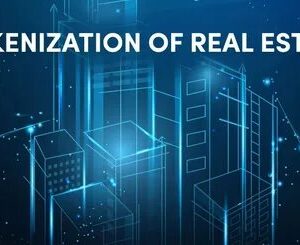
Outline:

Introduction
- Overview of the shift to hybrid work and its impact on the commercial real estate market
- The importance of adapting office spaces for flexibility in a hybrid work model
Section 1: The Rise of Hybrid Work
- What is Hybrid Work?
- Defining hybrid work and the various models (remote + in-office)
- The Impact of Hybrid Work on the Workforce
- How hybrid work benefits employees and employers
- Key statistics and trends supporting hybrid work models
Section 2: The Need for Flexible Office Spaces
- Flexibility as a Key Demand in Office Spaces
- How flexible workspaces meet the needs of hybrid work
- The Role of Coworking Spaces in a Hybrid Work Era
- Exploring the growing demand for coworking spaces
- Advantages of coworking spaces for businesses and freelancers
Section 3: Key Features of Modern Hybrid Office Spaces
- Technological Integration in Office Design
- The role of technology in creating flexible office environments
- Smart office features like collaboration tools and hybrid meeting spaces
- Space Layouts for Flexibility
- The shift from traditional cubicles to collaborative spaces
- How layout changes support productivity and employee well-being
Section 4: How Commercial Real Estate is Adapting
- Commercial Real Estate and the Changing Demand for Office Space
- Shifts in demand for traditional vs. flexible office spaces
- The role of commercial real estate developers in adapting to the hybrid model
- Redesigning Office Spaces for Hybrid Work
- Real-world examples of office space redesigns
- Key strategies employed by companies to adapt their office environments
Section 5: The Role of Health and Safety in Office Design
- Health, Safety, and Comfort in Hybrid Office Spaces
- Post-pandemic office design focusing on health and safety
- Improving air quality, spacing, and sanitation measures
- Designing for Employee Well-Being
- How office space design affects mental health and productivity
- Implementing biophilic design principles
Section 6: Economic Impact of Hybrid Work on Commercial Real Estate
- The Economic Implications of Hybrid Work on Office Leasing
- The shift from long-term leases to shorter, flexible contracts
- How hybrid work is affecting rental prices and leasing agreements
- The Future of Office Space Demand
- Predictions for office space usage in the next decade
- The role of hybrid work in shaping demand for commercial real estate
Section 7: Case Studies and Success Stories
- Real-World Examples of Hybrid Work Models
- Case studies from leading companies that have embraced hybrid work
- Lessons from Successful Commercial Office Redesigns
- How companies have transformed their office spaces to support hybrid work
Conclusion
- Recap of how commercial real estate is adapting to the needs of hybrid work
- Final thoughts on the future of office spaces in a post-pandemic world
FAQs
- What is hybrid work and how does it affect office spaces?
- What are the benefits of coworking spaces in a hybrid work model?
- How does technology play a role in hybrid office designs?
- What are the health and safety considerations in office space design?
- How is the demand for office spaces changing in the hybrid work era?
Revolutionizing Commercial Real Estate in a Hybrid Work Era: How Adapting Office Spaces to Flexible Work Models Can Make or Break Success
 Introduction
Introduction
The COVID-19 pandemic was a pivotal moment for businesses, forcing organizations to adapt quickly to remote work. As the world begins to adjust to a new normal, hybrid work has emerged as the preferred model for many organizations. Employees now work a mix of in-office and remote hours, creating a demand for flexible office spaces that support this dynamic model.
This shift has had a profound impact on the commercial real estate market, requiring companies and real estate developers to rethink traditional office layouts and designs. No longer are large, rigid office spaces the standard; instead, businesses are looking for spaces that are adaptable, collaborative, and efficient. In this article, we’ll explore how the commercial real estate industry is adapting to the hybrid work era, and what the future holds for office spaces as we embrace flexible work models.
What is Hybrid Work?
What is Hybrid Work?
Hybrid work refers to a flexible work model that combines in-office and remote work. Employees typically divide their time between working at the office and working from home or other locations. This model allows for greater work-life balance, flexibility, and autonomy for employees while maintaining a physical office presence for collaboration, meetings, and team-building.
Since the pandemic, hybrid work has become a popular model for organizations looking to accommodate their employees’ needs for flexibility. Companies like Microsoft, Google, and Facebook have all embraced hybrid work to some extent, offering employees the ability to work remotely a few days a week.
The Impact of Hybrid Work on the Workforce
The shift to hybrid work has been transformative. Employees appreciate the flexibility of working from home, saving time and money on commuting, while still enjoying the benefits of office interaction for collaboration and team building. On the employer side, hybrid work has led to increased productivity, employee satisfaction, and retention rates. A survey by Gallup found that 54% of workers preferred a hybrid work arrangement, demonstrating its popularity across industries.
Hybrid work models offer businesses a competitive advantage by attracting top talent who value the freedom to choose where they work. Additionally, employers are able to save on real estate costs, as office spaces can be optimized for more flexible usage patterns.
Flexibility as a Key Demand in Office Spaces
Flexibility as a Key Demand in Office Spaces
The shift toward hybrid work has led to a growing demand for flexible office spaces. Companies no longer need large, fixed office spaces where employees are expected to work every day. Instead, they are seeking spaces that can be easily adjusted to accommodate varying numbers of employees, rotating schedules, and different work needs. Flexible office spaces are not just about offering the option to work remotely; they are about designing spaces that are adaptable and functional.
Coworking spaces, hot-desking areas, and flexible leasing options have become increasingly important for businesses that need to remain agile in response to changing workforce dynamics. With hybrid work, companies can reduce their office footprint and invest in spaces that prioritize collaboration, innovation, and well-being.
The Role of Coworking Spaces in a Hybrid Work Era
Coworking spaces have seen a surge in popularity as businesses look for more adaptable work environments. These spaces are designed to accommodate both individuals and teams, offering a variety of options such as hot desks, private offices, meeting rooms, and communal areas. Spaces like WeWork, Regus, and Spaces have become central to the hybrid work movement, providing businesses with flexible lease options and fully equipped, modern facilities.
For employees who may not want to work from home full-time, coworking spaces provide a professional, collaborative environment with access to high-speed internet, meeting rooms, and networking opportunities. For businesses, coworking spaces allow for short-term leases that align with fluctuating office needs, enabling them to scale their office space as their workforce evolves.
Technological Integration in Office Design
Technological Integration in Office Design
In the hybrid work era, technology plays a crucial role in designing flexible, efficient office spaces. Smart offices are equipped with advanced technologies that make hybrid work smoother and more productive. Key innovations include:
- Hybrid meeting rooms: These rooms allow employees to connect with remote workers through video conferencing tools, ensuring seamless collaboration between in-office and remote workers.
- Cloud-based collaboration tools: Tools like Slack, Microsoft Teams, and Google Workspace facilitate communication and project management, making it easier for teams to collaborate regardless of their physical location.
- Room booking systems: Employees can reserve desks or meeting rooms in advance, optimizing space usage and ensuring that employees have the resources they need.
Space Layouts for Flexibility
The traditional office layout, characterized by rows of cubicles and closed offices, is becoming outdated. In the hybrid work era, companies are embracing open, flexible layouts that encourage collaboration and creativity. Shared workspaces, breakout areas, and modular meeting rooms are becoming standard features in modern office designs.
These flexible layouts allow employees to choose the type of space that best suits their work needs, whether it’s a quiet desk for focused work, a collaborative table for brainstorming, or a meeting room for a team discussion. As businesses adopt hybrid work, office designs must support various work styles and workflows, fostering creativity and innovation.
Commercial Real Estate and the Changing Demand for Office Space
Commercial Real Estate and the Changing Demand for Office Space
The demand for traditional office spaces has shifted dramatically due to hybrid work. Many companies are downsizing their physical office spaces, reducing the number of desks and allocating more resources to flexible work areas. As employees spend more time working remotely, businesses can optimize their office spaces, using them primarily for meetings, collaboration, and team activities.
This change is also reflected in real estate prices. As demand for large, traditional office spaces decreases, rental rates for commercial spaces are likely to become more competitive, particularly for flexible, adaptable office environments. Developers who are quick to adapt to these new trends will have a competitive advantage in meeting the demands of the modern workplace.
Redesigning Office Spaces for Hybrid Work
The need for flexible office space is driving redesigns in commercial real estate. Developers are turning large office buildings into mixed-use spaces that cater to both work and leisure. Companies like Amazon, Twitter, and Apple are already leading the way in redesigning their office spaces to support hybrid models, creating collaborative zones and wellness areas that encourage creativity and employee well-being.
Some companies are also adopting a “hub-and-spoke” model, with a central office (the hub) and several smaller satellite offices (the spokes) closer to employees’ homes. This model reduces commute times while maintaining a central location for team meetings and corporate events.
Health, Safety, and Comfort in Hybrid Office Spaces
Health, Safety, and Comfort in Hybrid Office Spaces
As the hybrid work model continues to reshape office environments, the need to prioritize health, safety, and employee comfort has become more important than ever. In the wake of the COVID-19 pandemic, organizations are making significant changes to office designs to create safer, more comfortable workspaces that accommodate both in-office and remote employees. These changes not only aim to improve physical health but also address mental and emotional well-being, ensuring that employees feel supported and safe when they return to the office. Let’s dive deeper into the key considerations and innovations in hybrid office spaces.
1. Air Quality and Ventilation Improvements
One of the most critical aspects of health in a hybrid office space is air quality. The pandemic has heightened awareness of the importance of good ventilation and clean air, especially in shared spaces. To address these concerns, many offices are upgrading their HVAC systems (Heating, Ventilation, and Air Conditioning) to ensure proper airflow and reduce the risk of airborne viruses.
Air purifiers and advanced filtration systems are becoming standard features in modern office designs. These systems help to filter out harmful particles and ensure that employees breathe in fresh air. Moreover, many office designs now include open windows or automatic ventilation systems to increase airflow and minimize the risk of contamination.
For more information on how office buildings are improving air quality, you can visit this insightful article on office HVAC improvements.
2. Touchless Technology
Touchless technology has become a key component of creating a safe and hygienic hybrid office environment. With employees spending less time in the office and more time working remotely, contactless systems make it easier for individuals to interact with office facilities without the need for direct physical contact. These systems include:
- Touchless entry systems for doors
- Voice-activated technology for controls (lights, temperature, etc.)
- Touchless restrooms with motion sensors
- Contactless payment systems for office vending machines and cafeterias
These innovations not only improve hygiene but also enhance the overall employee experience, making it more convenient and safe for people to move through the office.
For further insights into touchless technology, check out this guide on implementing touchless systems.
3. Social Distancing and Space Planning
In a hybrid office, it’s essential to accommodate employees who work on-site while maintaining safe social distancing. This requires rethinking the traditional office layout. Open-plan offices that once emphasized collaborative environments are now being reconfigured to support a balance of collaborative spaces and private workstations.
Many companies are choosing to adopt flexible desk arrangements like hot-desking and bookable workstations. This ensures that employees don’t sit too close together, reducing the likelihood of close-contact exposure. To further support social distancing, meeting rooms are now often equipped with partitions or are designed with fewer seating arrangements, ensuring there’s adequate space between each person.
To see how office layouts are being adjusted for social distancing, you can refer to this article on designing socially distanced office spaces.
4. Biophilic Design for Mental Well-Being
Employee mental health is another critical consideration in modern office design. Biophilic design—which integrates natural elements such as plants, natural light, and water features into the workspace—has gained popularity as a way to reduce stress and increase productivity. By connecting people with nature, biophilic design can improve mood, reduce anxiety, and increase overall well-being.
In hybrid workspaces, biophilic elements can also create a sense of comfort and relaxation in shared spaces, encouraging employees to return to the office without feeling overwhelmed. Offices are incorporating more indoor plants, living green walls, and natural materials (wood, stone, etc.) into their interiors to create a calm, inviting environment.
You can explore how biophilic design is being used in modern workplaces through this in-depth guide on biophilic office designs.
5. Hygiene and Sanitization Stations
To maintain a high standard of cleanliness and hygiene, offices are now incorporating sanitization stations throughout their spaces. These stations, stocked with hand sanitizers, disinfectant wipes, and personal protective equipment (PPE), allow employees to keep their hands clean and safe during their time in the office.
In addition, cleaning protocols are being adapted to ensure that high-touch areas such as door handles, elevators, and shared spaces are frequently disinfected. Many offices also offer disposable covers for communal items like keyboards and phone chargers, ensuring that employees can interact with shared tools safely.
For more about hygiene protocols and ensuring workplace cleanliness, check out this comprehensive article on sanitization in offices.
6. Employee Comfort: Ergonomic Furniture and Relaxation Zones
As the nature of work continues to evolve, so do the ergonomic needs of employees. Offices that support hybrid work must consider employee comfort, as employees will spend more time in the office and may also spend long hours at their desks. Offices are increasingly providing ergonomic furniture such as adjustable chairs, sit-stand desks, and anti-fatigue mats to reduce the risk of discomfort and injury.
Additionally, relaxation zones are becoming more common in modern office designs. These zones often include comfortable seating, soft lighting, and quiet spaces for employees to recharge. With mental health becoming a growing concern, creating spaces where employees can take breaks and manage stress is essential for long-term productivity.
If you’re interested in learning more about how ergonomic office furniture can improve productivity and employee well-being, visit this guide on ergonomic furniture.
As we continue to embrace the hybrid work model, creating office spaces that prioritize health, safety, and employee comfort will be essential to fostering a productive, happy, and healthy workforce. The health and safety measures in hybrid office spaces—including improved air quality, touchless technology, social distancing, and ergonomic furniture—will ensure that employees feel comfortable and safe when they return to the office.
By designing spaces that incorporate biophilic design elements, focus on employee well-being, and maintain strict hygiene standards, companies can encourage their employees to embrace the hybrid work environment while providing them with the tools and resources they need to thrive. As businesses continue to adapt, the commercial real estate sector will evolve to meet the changing needs of modern workplaces, setting the stage for a more flexible and efficient future of work.
The COVID-19 pandemic has highlighted the importance of health and safety in office designs. Post-pandemic office spaces must prioritize employee health through better air circulation, social distancing measures, and contactless technology. Commercial office spaces are now incorporating health-conscious features like improved HVAC systems, touchless entry, and sanitation stations.
In the hybrid work model, employees will continue to come in sporadically, which means that creating an office space that ensures comfort and safety for all employees who visit is essential.
Conclusion
The hybrid work model is here to stay, and with it comes significant changes to commercial real estate. Offices must become more flexible, technologically advanced, and health-conscious to meet the needs of a workforce that is increasingly divided between the home and office. As businesses adjust to this new reality, the commercial real estate industry must evolve to accommodate these shifts. Flexible office spaces, improved collaboration tools, and redesigned layouts will play a crucial role in supporting the future of work.
FAQs
1. What is hybrid work and how does it affect office spaces?
Hybrid work is a flexible work model that combines remote and in-office work. This shift requires companies to adapt their office spaces by incorporating flexible layouts and technologies that support both in-office and remote collaboration.
2. What are the benefits of coworking spaces in a hybrid work model?
Coworking spaces offer flexible leases, collaborative environments, and modern amenities. They provide businesses with an adaptable space for employees who may not need a permanent office but still require a professional environment for meetings and teamwork.
3. How does technology play a role in hybrid office designs?
Technology is essential in hybrid office designs to enable smooth communication between remote and in-office employees. Features like hybrid meeting rooms, cloud collaboration tools, and room booking systems are crucial for maintaining efficiency and productivity.
4. What are the health and safety considerations in office space design?
Post-pandemic office design focuses on improving air quality, incorporating touchless technology, providing ample spacing, and ensuring sanitation measures to protect employee health while supporting the hybrid work model.
5. How is the demand for office spaces changing in the hybrid work era?
The demand for traditional office spaces has decreased as companies embrace hybrid work. Flexible, adaptable office spaces are now in greater demand, as businesses seek environments that support both remote and in-office workers.






